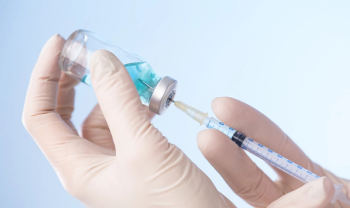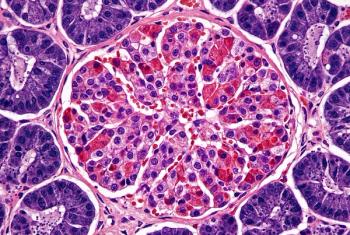
FDA Approves Prefilled Vaccine Presentation for Shingrix
This new Shingrix vaccine presentation eliminates the need for reconstitution, simplifying the administration process for healthcare professionals.
The FDA has approved a new, prefilled syringe option of GSK’s Shingrix (Zoster Vaccine Recombinant) for the prevention of shingles (herpes zoster), according to a
“The prefilled syringe presentation of GSK’s shingles vaccine is good news, providing a convenient method of administration,” Brigid Groves, vice president of professional affairs, American Pharmacists Association, said in the news release. “The FDA approval is a positive step toward driving prevention of this painful disease, and as a practicing pharmacist, I welcome the availability of this new presentation.”
Shingles is a viral infection that causes a painful, blistering rash, usually appearing on one side of the body. People develop shingles when the varicella-zoster virus (VZV), the same virus that causes chickenpox, reactivates in their body. Although anyone can get shingles, it is more common in adults over the age of 50, as 99% of adults in this age range already have the virus in their body. Approximately 1 million people develop shingles every year in the United States, and although most only get shingles once, it can be recurrent. Shingles can also lead to serious complications, the most common being long-term nerve pain called postherpetic neuralgia, or PHN, according to the
Shingrix was initially approved by the FDA in 2017 for adults ages 50 and older as well as adults 18 and older at an increased risk of shingles due to immunodeficiency or immunosuppression. Compared to placebo, in patients 50 and older, Shingrix reduced the risk of developing herpes zoster by 97.2%, according to efficacy studies. In patients at least 18 years of age, Shingrix had an overall efficacy rate of 68%, according to the
The CDC currently recommends individuals receive two doses of the shingles vaccine, with the second dose administered at least 2 months after the first dose, according to the Shingrix prescribing information.
The safety of Shingrix for individuals ages 50 and older was evaluated in two placebo-controlled studies consisting of 29,305 subjects. The most common adverse reactions were pain at the injection site (78%), myalgia (45%) and fatigue (45%).
In a separate safety study, individuals ages 18 and older with increased risk of shingles also reported pain at the injection site (88%), fatigue (64%) and myalgia (58%). An increased risk of Guillain-Barré syndrome was seen in the 42 days following Shingrix administration.
Patients with Medicare Part D have an out-of-pocket cost of
Shingrix is not recommended for anyone with a previous severe allergic reaction to the vaccine components. Current data is insufficient to determine whether Shingrix is safe for pregnant or breastfeeding women. Shingrix is also not intended to prevent primary varicella infection (chickenpox), the release says.
This presentation of Shingrix is also currently undergoing regulatory review by the European Medicines Agency (EMA). Filing acceptance was received in January 2025, according to the news release.
Newsletter
Get the latest industry news, event updates, and more from Managed healthcare Executive.






















































